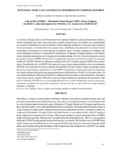Use este identificador para citar ou linkar para este item:
http://www.alice.cnptia.embrapa.br/alice/handle/doc/918097Registro completo de metadados
| Campo DC | Valor | Idioma |
|---|---|---|
| dc.contributor.author | VIEIRA, L. da S. | pt_BR |
| dc.contributor.author | LOBO, R. N. B. | pt_BR |
| dc.contributor.author | BARROS, N. N. | pt_BR |
| dc.contributor.author | PORTELA, C. H. da P. | pt_BR |
| dc.contributor.author | SIMPLÍCIO, A. A. | pt_BR |
| dc.date.accessioned | 2012-03-08T11:11:11Z | pt_BR |
| dc.date.accessioned | 2012-03-08T11:11:11Z | pt_BR |
| dc.date.available | 2012-03-08T11:11:11Z | pt_BR |
| dc.date.available | 2012-03-08T11:11:11Z | pt_BR |
| dc.date.created | 2012-03-08 | pt_BR |
| dc.date.issued | 2005 | pt_BR |
| dc.identifier.citation | Ciência Animal, Fortaleza, v. 15, n. 1, p. 25-31, 2005. | pt_BR |
| dc.identifier.uri | http://www.alice.cnptia.embrapa.br/alice/handle/doc/918097 | pt_BR |
| dc.description | A eficácia de drogas para o controle da eimeriose caprina é limitada quando já há sintomas clínicos, sendo o tratamento preventivo mais eficaz que o curativo. Desta forma, foi avaliado o uso da monensina no controle da eimeriose em caprinos leiteiros. Foram utilizadas 48 fêmeas, 32 da raça Anglo-nubiana e 16 da raça Saanen, com idade entre três e quatro meses, distribuídas aleatoriamente por sorteio em dois tratamentos. O tratamento I, constituído por 24 animais, sendo 16 Anglo-nubiana e oito Saanen, não foram medicadas (controle) e o tratamento II, formado por 24 animais, 16 Anglo-nubiana e oito Saanen, foram medicadas diariamente com 0,5mg/kg de monensina durante 234 dias. O número médio de oocistos por grama de fezes (OOPG) durante todo o experimento do grupo controle foi superior ao do grupo medicado (P<0,05). Não houve diferença estatística (P>0,05) na média geral de OOPG entre as duas raças. O padrão da curva de OOPG dos animais da raça Anglo-nubiana diferiu entre os tratamentos (P<0,05), com maior decréscimo nos animais do tratamento I, na fase inicial, e maior crescimento na fase final. Para a raça Saanen, o padrão da curva de OOPG foi igual entre os dois tratamentos. Os animais da raça Anglo-nubiana não medicados apresentaram peso médio inferior (P<0,05) ao dos medicados. Na raça Saanen não houve diferença (P>0,05) na média geral de peso entre os dois tratamentos, entretanto, o peso desta raça foi superior (P<0,05) ao da raça Anglo-nubiana, independente do tratamento. Não houve diferença (P>0,05) na curva de ganho de peso entre os dois tratamentos, para as duas raças, entretanto, os animais da raça Saanen ganharam mais peso do que os animais da raça Anglo-nubiana (63g/dia vs. 41g/dia). [Sodium monensin for eimeriosis control in dairy goat herd]. Abstract - The efficacy of drugs to control caprine eimeriosis is limited when clinical symptoms already exist, and preventive treatment is more efficient than cure. Thus, the use of sodium monensin was evaluated in order to control caprine eimeriosis in dairy goats. 48 females, 32 Anglo-Nubian and 16 Saanen, aged between three and four months, were randomly distributed in two treatments. Treatment I had 24 animals, being 16 Anglo-Nubian and eight Saanen, which did not receive any medication (control); Treatment II, which was composed of 24 animals (16 Anglo-Nubian and eight Saanen), were medicated daily with a 0.5 mg/kg of body weight dose of monensin for 234 days. The average number of oocytes per gram of feces (OOPG) in the control group in the whole period was higher than the medicated group. There was no statistical difference (P>0.05) in the general average between the two breeds. The standard curve of OOPG from Anglo-Nubian animals differed between treatments (P<0.05), decreasing in treatment I during the initial phase and increasing during the final phase. In the Saanen breed, the standard curve of OOPG was similar in both treatments. The non-medicated Anglo-Nubian animals presented lower average weight (P<0.05) than the medicated animals. In the Saanen breed, no difference was observed (P>0.05) in the general average weight between both treatments. However, the average live weight in this breed was superior (P<0.05) to the Anglo-Nubian breed, no matter what the treatment. No difference was observed (P>0.05) in the curve of weight gain between treatments, in both breeds; nevertheless, the Saanen animals presented higher weight gain (P<0.05) than the Anglo-Nubian animals (63 g/day vs. 41 g/day). | pt_BR |
| dc.language.iso | por | pt_BR |
| dc.rights | openAccess | pt_BR |
| dc.subject | Quimioterapia | pt_BR |
| dc.subject | Antibiótico ionóforo | pt_BR |
| dc.subject | Monensina sódica | pt_BR |
| dc.subject | Sodium monensin | pt_BR |
| dc.subject | Controle | pt_BR |
| dc.title | Monensina sódica no controle da eimeriose em caprinos leiteiros. | pt_BR |
| dc.type | Artigo de periódico | pt_BR |
| dc.date.updated | 2017-09-08T11:11:11Z | pt_BR |
| dc.subject.thesagro | Caprino | pt_BR |
| dc.subject.thesagro | Eimeriose | pt_BR |
| dc.subject.thesagro | Doença animal | pt_BR |
| dc.subject.nalthesaurus | Drugs | pt_BR |
| dc.subject.nalthesaurus | Goats | pt_BR |
| dc.subject.nalthesaurus | Eimeria | pt_BR |
| dc.subject.nalthesaurus | Ionophores | pt_BR |
| riaa.ainfo.id | 918097 | pt_BR |
| riaa.ainfo.lastupdate | 2017-09-08 -03:00:00 | pt_BR |
| dc.contributor.institution | LUIZ DA SILVA VIEIRA, CNPC; RAIMUNDO NONATO BRAGA LOBO, CNPC; Nelson Nogueira BARROS, CNPC; Carlos Henrique da Paz PORTELA; Aurino Alves SIMPLÍCIO, CNPC. | pt_BR |
| Aparece nas coleções: | Artigo em periódico indexado (CNPC)  | |
Arquivos associados a este item:
| Arquivo | Descrição | Tamanho | Formato | |
|---|---|---|---|---|
| APIMonensinasodica.pdf | 77,64 kB | Adobe PDF |  Visualizar/Abrir |









